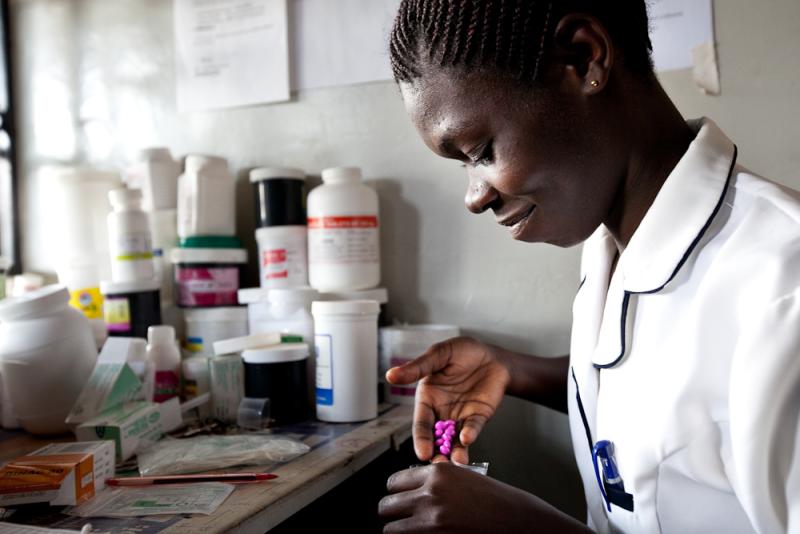Where We Work
See our interactive map


We often take it for granted in the United States, especially in urban and suburban areas, that we have access to a trained health care provider. In many countries, though, this is just not the reality.
The tragedy for many health workers in countries such as Kenya is that they have a dream of offering high-quality services, but no way of doing their work well. Sometimes this is because health workers lack medicines, basic supplies, and equipment. Sometimes, however, it is because they do not have access to high-quality state-of-the-art training. The Clinton Global Initiative (CGI) has given IntraHealth an opportunity to highlight our commitment to the health worker, to focus on what can be done concretely at the country level. At this year’s annual CGI meeting, we made a commitment to give more frontline health workers in Kenya access to the quality training they need to do their jobs effectively.
We and our partners will use information technologies designed or adapted in Kenya to create and distribute training programs to Kenyan health workers. We are especially focusing on health workers who provide much-needed services in the remote Kenyan regions of Kitui and Kisumu.
The current traditional approach to training and education is expensive and draws health workers away from their clinics and communities. Our commitment, I think, will give the world an example of what can be accomplished by using technology to reduce costs, improve quality, and expand access to health worker training.
Kenya is making a name for itself as a hub for technology. You may have heard of the iHUB, which is one of the groups we are partnering with. It’s the first innovation lab on the continent, a meeting place created for technologists, investors, tech companies, and hackers in Nairobi to come together and design innovative solutions related to technology.
We will be working with local developers who will design the training programs. Homegrown technological solutions are cheaper, more relevant, and more likely to last. We believe that if we invest in local developers—and local decision-makers and local health workers—and empower them to participate in creating solutions, it’s more likely to work and to be sustainable. Uptake will be greater. Local developers will still be there when others leave at the end of a project and can fix problems when they come up. And by partnering not only with local developers, but also local training institutions, we will help strengthen the entire health system.
Intel, another one of our partners, will provide an open access eLearning tool, Skoool Healthcare Education, which Kenyan health professionals can use to adapt and create training programs based on national standards.
Who exactly will we help with our commitment? Well, I am thinking about a nurse in Kitui, for example (which is where we are already developing a training Centre of Excellence at the local medical training college). When our commitment is fulfilled, this person will not have to worry anymore that she has to leave her clinic for days in a row just to get an update on a course. When this person completes her day, she will be able to turn on her computer and get the information she needs.
What could be more empowering?
I’m also thinking about all of the health workers we are going to reach. We are going to allow them to continue to better themselves and to better serve their communities, which is what they are passionate about.
If Kenyan health workers know they can continue their learning on their own, if they know they can get connected to the Internet and seek help from a colleague who is sitting somewhere in Nairobi, Kampala, or Chapel Hill, for example—just think about what that would mean. It would give health workers the gift of time, the ability to save more lives. When I think about our commitment and the end result, it’s really these changes that are going to make the difference.
We also want to start making a dent in that dismal statistic: the one billion people in this world who may never come in contact with a health provider in their entire lives. I hope that by making the information and the training available where it’s needed the most, we are giving a chance to these people, a chance to get in contact with and receive services from a health worker.
I salute CGI for highlighting not only the health workforce but the importance of strengthening training and health systems. In the end, that is what our commitment is all about.
Get the latest updates from the blog and eNews




